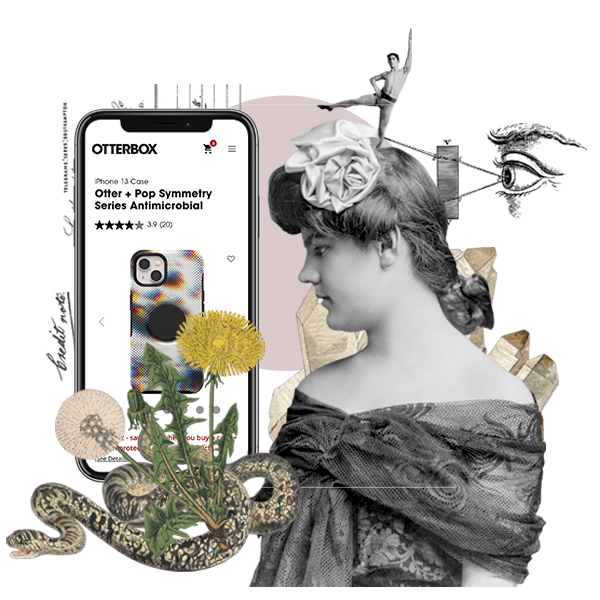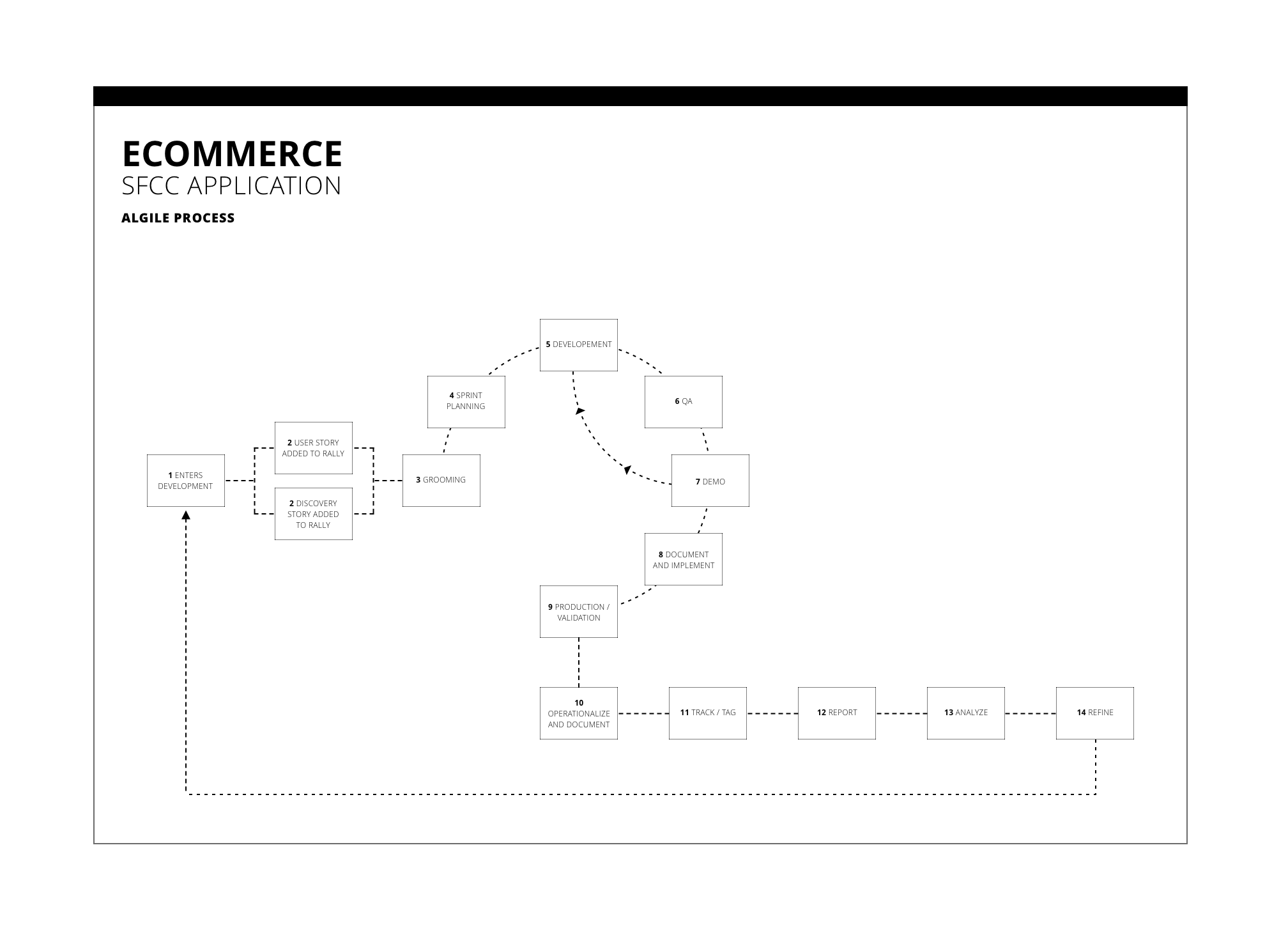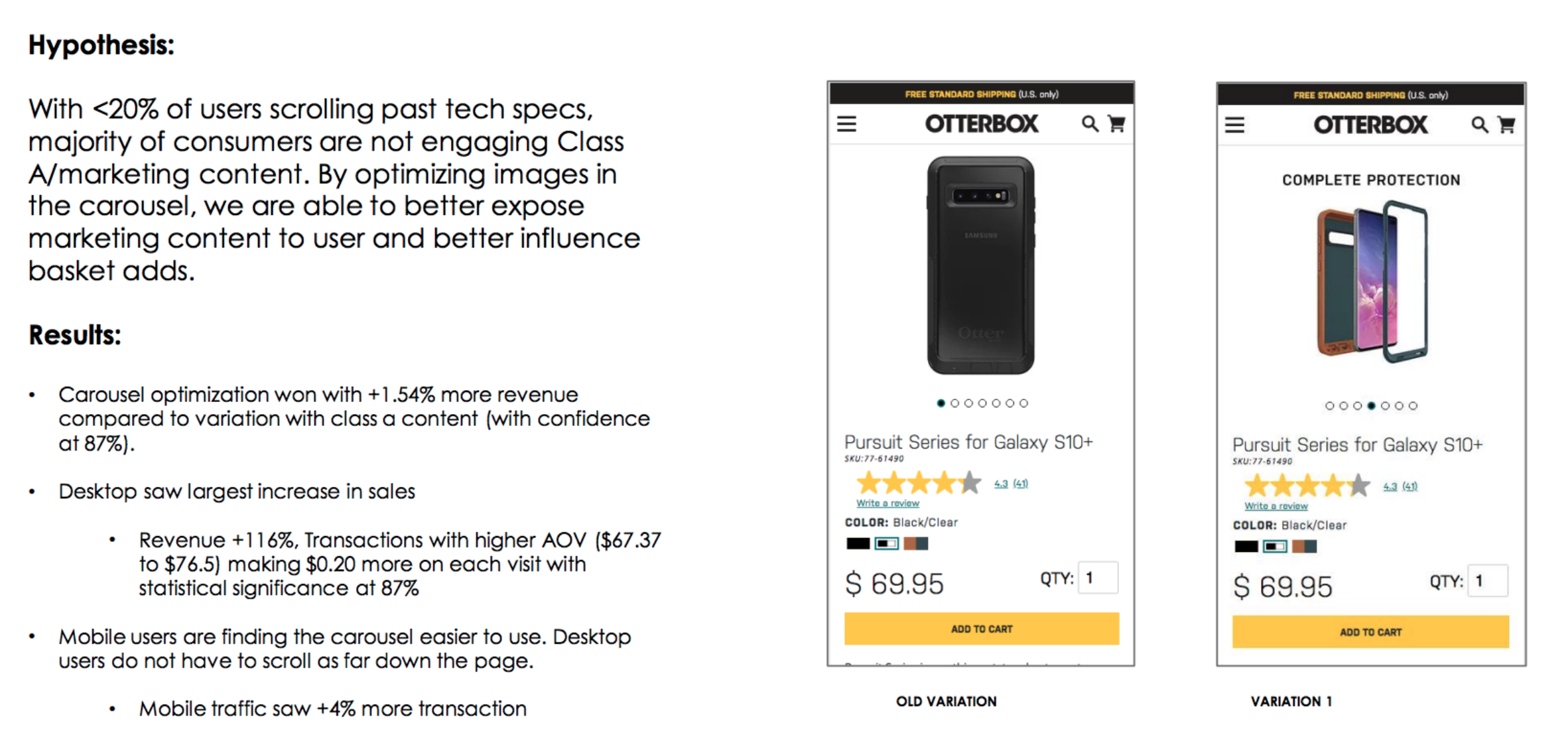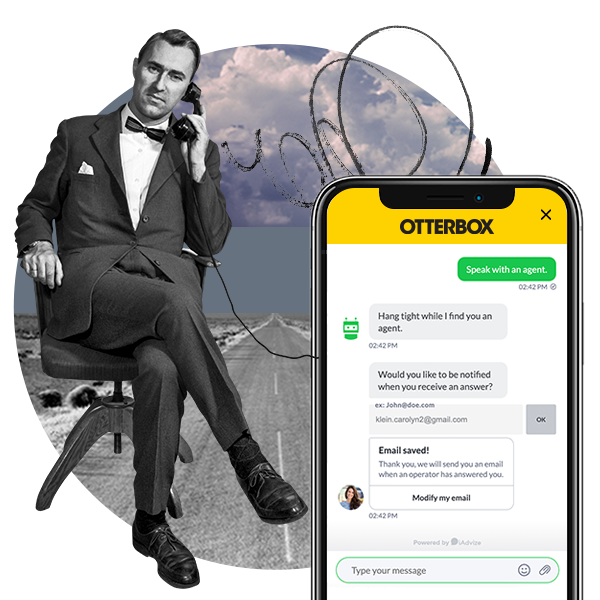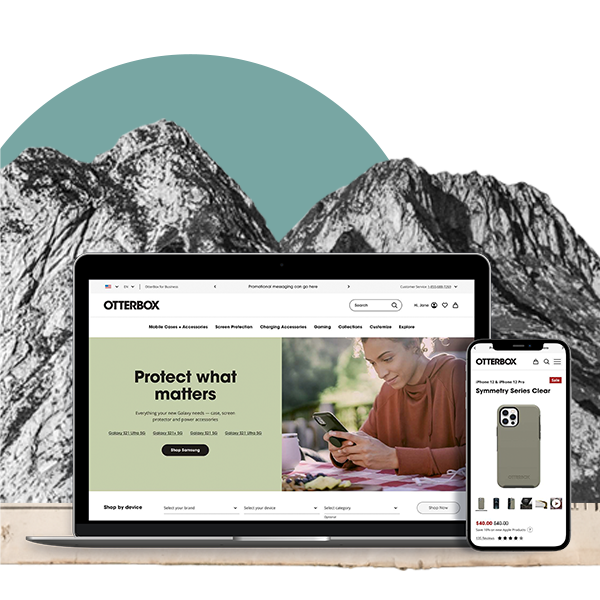Strategically Improving the OtterBox Shopping Journey Leads to 66.7% Increase in E-Commerce Sales
TimeLine
2017 - 2020
Role
Testing Program Manager
Tools
Demandware, Google Analytics, HotJar, Excel, Sketch
Background:
Otterbox is a leading global manufacturer of mobile protective cases and accessories, selling their products through retail stores and online worldwide. After experiencing initial success launching Otterbox.com in 2014, the business started to see a steady $10M decline YoY by 2017. The data showed that while site visit were up YoY, conversion rate and dropoff were not improving. Without a roadmap, the site had failed to prepare for the customers desire for mobile optimized shopping. To add, years of inconsistent coding practices and lack of a design system impacted usability and created challenges with reporting and baselining KPIs. As the new UX lead, my assignment was to design and implement a strategy to optimize the website to improve usability and increase sales.
Research & Planning:
To ensure success, I prioritized collaboration and prepared thoroughly for the testing process by:
Devising a strategy for cleaning up the codebase and implementing a basic pattern that would be implemented site-wide and evolve with new components as business needs change. This approach improved development time and site speed, as well as allowed us to baseline data and generate KPIs and reports with confidence.
Reviewing site performance data and industry best standards for key pages and functionality in the shopper funnel, such as category pages, product listing pages, product detail pages, search, and navigation structure. Additionally, we established customer-related goals, such as account registration, repeat purchase, and cart abandonment.
Conducting a thorough analysis of customer feedback, as there was little information available on user experience. We brainstormed potential usability challenges on key pages and devised a plan to gather customer feedback.
Process:
I led the team in creating a charter that defined the steps of the design process, documented the framework in which usability tests would be set up, deployed, and reported, and provided definitions and examples of different usability tests and strategies that might be used. Our goal was to launch and report on a new test every two weeks.
We employed an A/B, multivariate approach for our testing. Given the disjointed UI of the website previously, there were many optimization opportunities available within each section of the shopper journey. Without a solid baseline and understanding of the KPIs, it was essential to focus on one area at a time to make meaningful progress.
To facilitate collaboration and ensure that we met our testing schedule, I established regular meetings with the development and analytics teams to review test design, scheduling, development, and deployment. Additionally, we scheduled time to review the test results as a team and make data-driven decisions on future optimization efforts.
REPORTING Example:
Outcome:
Results of testing program aiding in delivering a 66.7% increase in online revenue (between 2018 - 2020).
Increased PDP to Buy Rate by +3%
Increased Mobile conversion by +19%
Increased checkout conversion by +11
Improved NPS score from 53 to 75
Delivered 33 unique optimization tests within 3 years
Increased Account Holders to 2 million
Created and executed a plan to establish a unified design system that would clean up the code base and enable user data to be normalized on key purchase funnel pages prior to testing initiatives.
Accomplishments:
Demonstrated cross-functional leadership and collaboration to achieve results that exceeded leadership expectations.
Collaborated with the analytics team to formulate hypotheses, create test plans, and review and report the results of executed tests. Results were shared out in in company wide bi-weekly reporting efforts.
Shared e-commerce best practices and test findings with the larger OtterBox organization to help improve UX maturity throughout the company.
Checkout some more work.
Project 2
How I Leveraged AI to Drive $1m in Revenue and Improve the Shopper Journey for OtterBox Customers Online
Project 3
How I Strategically Helped OtterBox Migrate from Demandware to Salesforce Commerce Cloud
Project 4
How User Research Helped Transform a Legacy Vendor System Through Customer Insights
Project 5
Streamlining Parking Permits: How Four Web Applications Simplified a Complex Workflow
